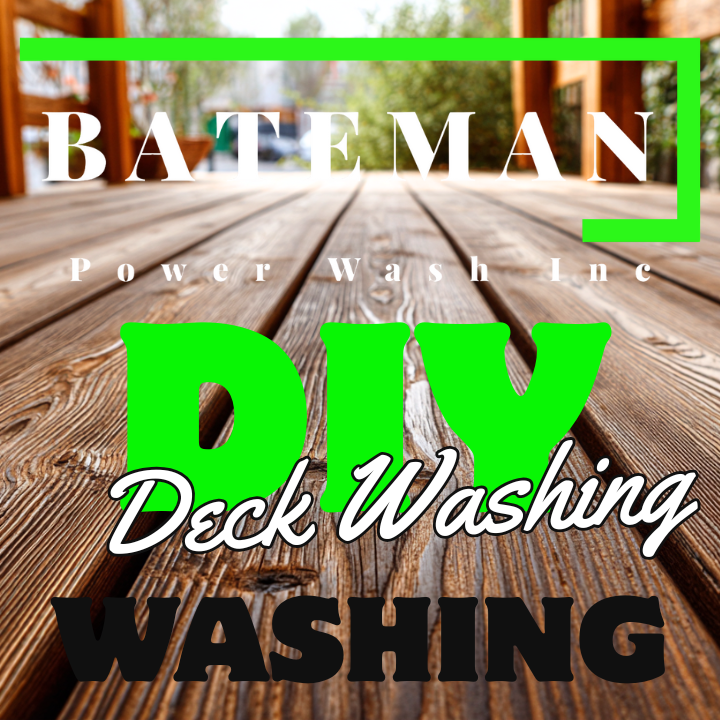Table of Contents
- Introduction: Why Decks Need Regular Cleaning
- Essential Equipment & Tools Checklist
- Choosing the Right Detergent (And What to Avoid)
- Pressure Washer Settings: PSI, GPM, Nozzles Explained
- Prepping the Work Area: Safety & Protection Measures
- Step-by-Step Process to Pressure Wash Decks
- Troubleshooting Common Deck Issues (Mold, Fading, Gouging)
- Post-Cleaning Treatments for Long-Lasting Results
- Advanced Tips: Speed, Technique, and Avoiding Damage
- Safety Protocols for Technicians
- Maintenance Schedule: How Often Should Decks Be Washed?
- Client Education: What They Should Know Before & After the Service
1. Introduction: Why Decks Need Regular Cleaning
Decks are constantly exposed to the elements—UV rays, rain, algae, mildew, and foot traffic. Over time, dirt and organic growth not only make a deck look dirty but also accelerate wood rot, warping, and surface damage.
Professional pressure washing restores the natural beauty of wood and composite decks while protecting against long-term structural damage.
2. Essential Equipment & Tools Checklist
- Pressure Washer: 1,200 – 2,500 PSI (Lower PSI for softwoods)
- Spray Nozzles:
- 40-degree (White Tip) — For delicate rinse
- 25-degree (Green Tip) — For general cleaning
- Soap Nozzle (Black Tip) — For applying detergent
- Deck Cleaner Solution (Wood-safe, biodegradable)
- Garden Hose with Backflow Preventer
- Soft Bristle Brush or Deck Scrub Brush
- Protective Gear: Safety glasses, gloves, non-slip boots
- Plastic Sheeting & Painter’s Tape (to protect house siding, outlets)
3. Choosing the Right Detergent (And What to Avoid)
Ideal Cleaners:
- Wood-safe, biodegradable deck cleaners
- Surfactants for lifting dirt without damaging wood fibers
- Oxygenated cleaners for removing mildew and organic stains
Avoid:
- Straight bleach (damages wood fibers)
- Acidic cleaners (can etch wood and corrode metal fasteners)
DIY Mix Example:
- 2 Gallons Warm Water
- 1/2 Cup Oxygen Bleach
- 1/4 Cup Liquid Dish Soap
4. Pressure Washer Settings: PSI, GPM, Nozzles Explained
- PSI:
- Softwoods (Cedar, Pine): 1,200 – 1,500 PSI
- Hardwoods (Ipe, Mahogany): Up to 2,500 PSI max
- Composite Decking: Use manufacturer recommendations (usually under 1,500 PSI)
- GPM: 2.0 – 4.0 GPM for effective rinsing
- Nozzles:
- 40-degree tip for general deck cleaning
- 25-degree tip for problem spots (with caution)
- Soap tip for detergent application
5. Prepping the Work Area: Safety & Protection Measures
- Inspect deck boards for damage, rot, or loose fasteners.
- Move furniture, grills, planters off the deck.
- Cover siding, doors, and nearby windows with plastic sheeting.
- Pre-wet surrounding plants to protect from detergents.
6. Step-by-Step Process to Pressure Wash Decks
Step 1: Pre-Rinse
- Use a garden hose or 40-degree nozzle to wet the entire deck.
- This prevents detergent from soaking directly into dry wood.
Step 2: Apply Detergent
- Use a soap nozzle to apply deck cleaner.
- Work in sections, applying bottom to top.
- Let the solution dwell for 10-15 minutes (keep surface wet).
Step 3: Scrub Problem Areas
- Use a soft-bristle deck brush to agitate heavy mildew or dirt spots.
- Focus on gaps between boards and high-traffic zones.
Step 4: Rinse with Controlled Pressure
- Switch to a 40-degree nozzle.
- Maintain 8-12 inches of distance from the surface.
- Spray along the wood grain to avoid etching.
- For stubborn areas, use a 25-degree nozzle briefly, at a distance.
Step 5: Final Inspection & Spot Clean
- Check for any lingering stains or soap residue.
- Spot rinse or lightly scrub as needed.
7. Troubleshooting Common Deck Issues
| Problem | Solution |
|---|---|
| Fuzzy Wood (Raised Grain) | Reduce pressure, sand after drying |
| Mold/Mildew Returns Quickly | Use a mold-inhibitor post-wash |
| Gouged Wood | Use lower PSI, always follow wood grain |
| Detergent Streaking | Re-rinse affected areas thoroughly |
8. Post-Cleaning Treatments for Long-Lasting Results
- After the deck is dry, apply a water-repellent sealant or stain.
- Suggest UV-protective coatings for decks in full sun.
- For composite decks, consider a polymer coating to resist future stains.
9. Advanced Tips: Speed, Technique, and Avoiding Damage
- Always test a small area first to ensure correct pressure.
- Keep wand moving in smooth, even passes.
- Use two-man crews: one applies detergent, the other follows with a rinse.
- Use fan-pattern nozzles to minimize direct impact.
10. Safety Protocols for Technicians
- Always wear safety glasses and non-slip footwear.
- Avoid ladder use on wet surfaces.
- Mark off work areas with caution tape if in public zones.
- Keep clear of electrical outlets and fixtures.
- Stop work immediately if wood starts to splinter or raise grain excessively.
11. Maintenance Schedule: How Often Should Decks Be Washed?
| Environment | Frequency |
| Shaded, Damp Areas | Every 6-8 months |
| Sunny, Exposed Decks | Annually |
| High Foot-Traffic Commercial Decks | Quarterly |
12. Client Education: What They Should Know
Before Service:
- Remove all movable furniture and plants.
- Ensure water supply is accessible.
- Discuss sealing/staining options post-cleaning.
After Service:
- Allow deck to dry fully before replacing furniture.
- Wait 24-48 hours before applying stains or sealants.
- Keep foot traffic minimal during drying.

